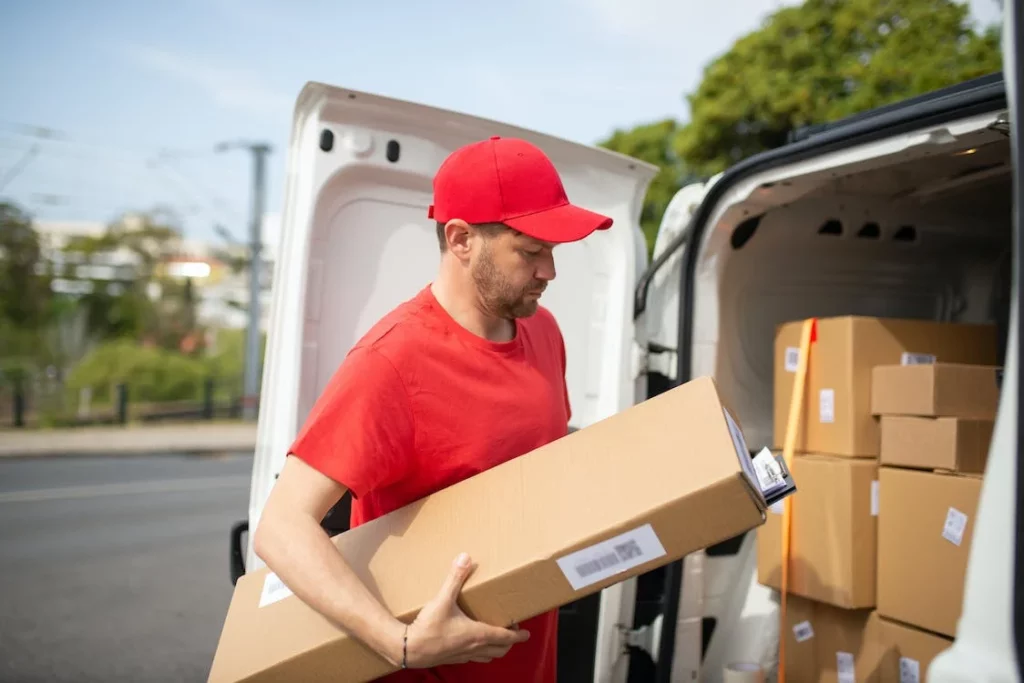The pulsating artery of global commerce is the transportation of goods from their origin to the final destination. This isn’t a straightforward or singular operation, but a multi-tiered journey comprising three key stages – from the moment an order is placed to when a customer receives their package and leaves feedback.
While we’ve discussed last mile delivery in detail previously, each stage carries its own complexities and challenges. This article will dissect the differences between these stages, dive deep into each, and investigate the obstacles they present in ensuring a seamless flow of the supply chain.
Decoding the Delivery Triad
Within the ambit of supply chain logistics, each stage has a specific function
The ‘First Mile’ marks the onset of the delivery journey, encompassing the collection of goods from producers or manufacturers. It encapsulates the first step of the logistics chain, involving the pickup, packaging, and initial transportation of goods.
‘Middle Mile’, lodged between the start and end stages, is a critical link that bridges the first and last mile delivery phases. It pertains to the transfer of goods from local hubs to regional distribution centers, sometimes covering vast distances or crossing international borders, to ensure timely and efficient delivery.
Lastly, the ‘Last Mile’ denotes the final leg of the journey, where goods are transferred from local distribution centers to the end consumer. As the terminal point of the logistics chain, it greatly influences the consumer’s experience, thereby playing a crucial role in customer satisfaction.
By gaining insight into the unique attributes of each stage, businesses can fine-tune their operations to achieve an efficient and seamless supply chain.
Exploring First Mile Delivery
Despite often being overlooked, the first mile delivery process forms the backbone of the entire supply chain journey. It commences with the collection of goods, either raw materials or finished products, from the producers or manufacturers, followed by their packaging and initial transportation.
Accuracy and efficiency are the pillars of the first mile stage. Right goods in correct quantities should be safely prepped for transit. Mistakes at this stage, like incorrect picking or packaging, can set off a chain reaction throughout the supply chain, resulting in expensive errors, delays, and potential damage to goods.
Furthermore, the first mile also necessitates integration of information systems for tracking and documentation. Details about the goods – their type, quantity, destination, and expected delivery time – are meticulously recorded, aiding in the coordination of the subsequent supply chain stages.
Understanding Middle Mile Delivery
Middle Mile, the crucial link connecting the initial and final stages of the delivery process, is often overshadowed by the first and last mile. It involves the transportation of large quantities of goods from various first mile sources to the distribution centers. Here, the goods are later divided for last mile delivery.
Given its large scale, the middle mile requires coordination of different transportation modes: road, rail, air, or sea. Factors such as distance, nature of goods, and delivery timeline determine the choice of transport mode. This stage also demands dealing with legal and geopolitical aspects, like customs clearance for international shipping or abiding by regional transportation laws.
An efficient middle mile process must strike a balance between speed, cost, and safety, and any delays or mishaps can disrupt the entire chain.
Unraveling Final Mile Delivery
The last mile constitutes the final part of the logistics journey, bringing goods from the local distribution center to the consumer. This is the stage where the supply chain directly interfaces with the customer.
Unlike the first and middle mile delivery, the last mile focuses on individual deliveries, which could be scattered across various locations. This stage is unique and crucial due to its direct impact on customer satisfaction. Any delay or error is instantly noticeable and can significantly affect the customer’s overall shopping experience.
The surge of e-commerce and heightened consumer expectations have further accentuated the importance of the last mile. Consumers demand quick, even same-day deliveries with real-time tracking and convenient options, often without any additional costs. Despite its challenges, an effectively executed last mile delivery process can substantially enhance customer satisfaction and loyalty.
Addressing the Unique Challenges
Each stage of the delivery process, while playing a crucial role in a successful supply chain, presents its unique challenges.
First Mile Challenges
In the first mile stage, challenges range from accurate picking and packaging of goods to efficient information systems for tracking and documentation. Timeliness is of essence at this stage to avoid causing delays downstream.
Middle Mile Challenges
The middle mile, with its extensive geographical coverage and complex coordination, faces numerous challenges. These include long-distance coordination, legal and geopolitical issues, selection of transport mode, and unforeseen disruptions such as extreme weather conditions or political unrest.
Last Mile Challenges
The last mile, despite being the most critical from a customer’s perspective, grapples with several issues. These include meeting elevated customer expectations, navigating urban congestion, handling returns and failed deliveries, providing flexible delivery options, and managing sustainability concerns.
Overcoming these challenges demands an in-depth understanding of each stage’s unique needs, strategic planning, and efficient execution. The hurdles, while seeming formidable, also provide opportunities for innovation and improvement.
Mastering Last Mile Delivery
Steering through the complexities of first mile, middle mile, and last mile logistics is no small feat. Each stage with its unique attributes and challenges is critical in establishing an efficient and effective supply chain. From ensuring accuracy in the first mile and managing expansive transportation in the middle mile to meeting customer expectations in the last mile, the demands are extensive and varied.







